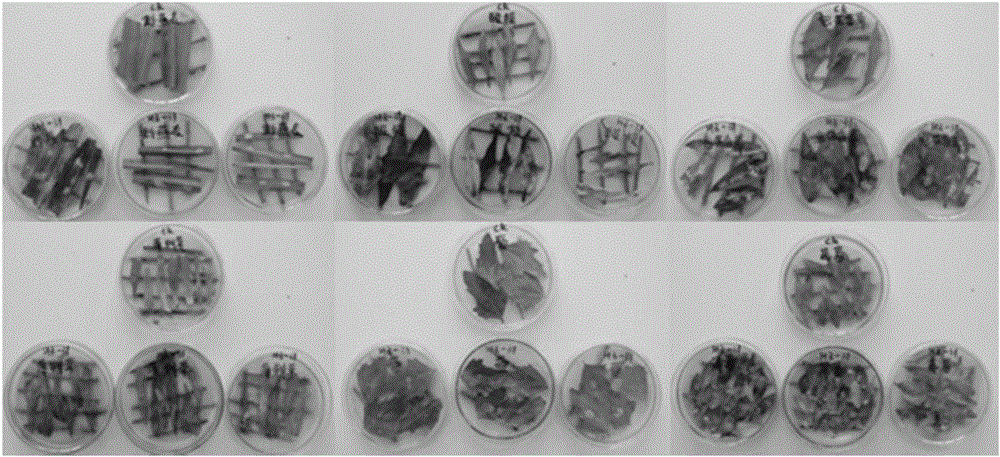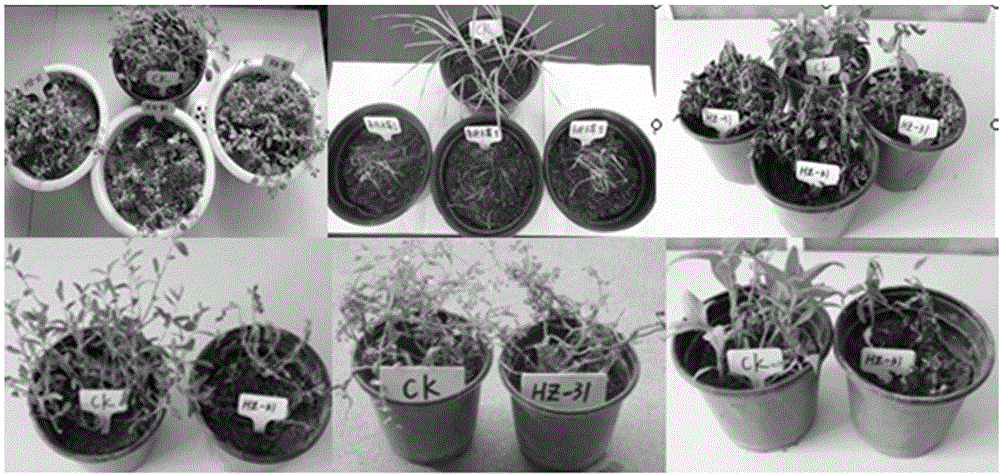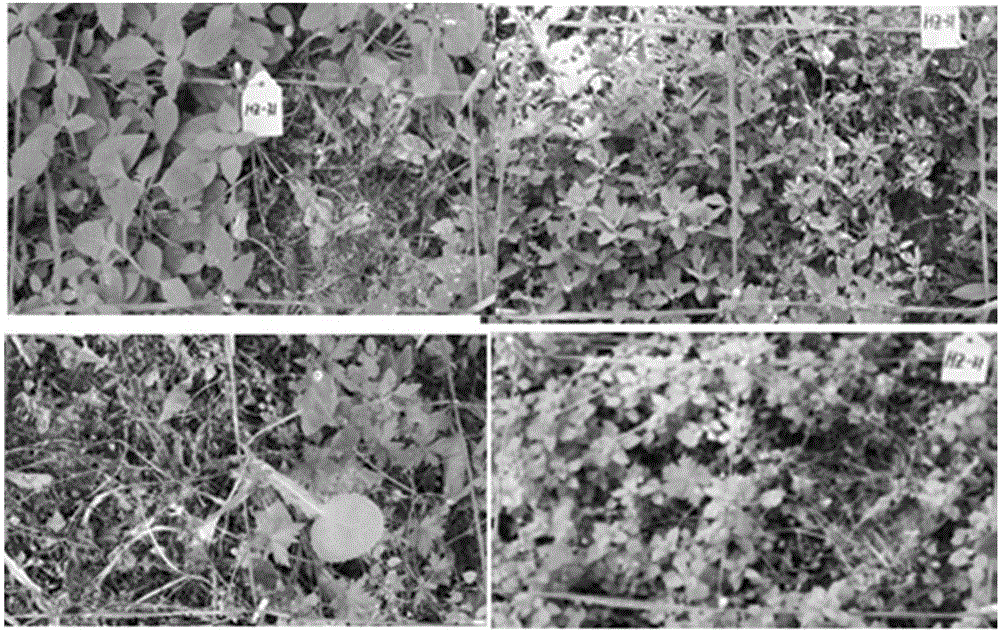Trichoderma polysporum fungus strain HZ-31 and application thereof to biological weeding
A technology of Trichoderma polyspores and Trichoderma, applied in the direction of microorganism-based methods, chemicals for biological control, applications, etc., can solve the problems of increased pollution, reduced drug efficacy, and increased costs, and achieve less negative environmental effects , low residue environment, high safety effect
- Summary
- Abstract
- Description
- Claims
- Application Information
AI Technical Summary
Problems solved by technology
Method used
Image
Examples
Embodiment 1
[0027] A Trichoderma polysporum strain, which is classified as Trichoderma polysporum HZ-31 (Trichoderma polysporum), was preserved on September 12, 2016 at No. 3, Courtyard No. 1, Beichen West Road, Chaoyang District, Beijing, China. General Microbiology Center of Culture Collection Management Committee, the preservation number is CGMCC No.12867. After the strain was cultured on a PDA plate for 7 days, dense white conidia were produced on the surface, and the conidiophores were arranged in hemispherical or cushion-like blisters. Four whorled, right-angled, conidia are oblong or spherical, and smooth. Combined with morphological characteristics and molecular identification results, the strain HZ-31 was judged to be Trichoderma polysporum.
Embodiment 2
[0028] The preparation of embodiment 2 wettable powder
[0029] 1. Determination of optimal fermentation conditions for strain HZ-31
[0030]The carbon and nitrogen source single factor test was carried out with PDA medium as the basic medium, and the optimal carbon and nitrogen source of the strain HZ-31 was determined by the sporulation yield and OD absorbance value of the spore suspension; rapeseed cake, wheat straw bran, Sheep manure, wheat bran, perlite and vermiculite were used as substrates, cultured after inoculating the bacterial solution, and the solid-state fermentation substrate with high spore production was determined; rapeseed cake was used as the substrate, mixed nutrients were added to the triangular flask, and each treatment Add 20 mL of sterile water, connect spore suspensions with different ratios of matrix volume fractions, and determine the optimum inoculation amount of liquid strains by counting with a hemocytometer; screen out the water content of the m...
Embodiment 3
[0042] The influence of embodiment 3 strain HZ-31 wettable powder on the pathogenicity of weeds
[0043] Collect fresh weed leaves, place them in a petri dish lined with sterile filter paper, prepare HZ-31 wettable powder, and inoculate the amount of 100uL / leaf. Take the leaves only inoculated with water as the control, and repeat each treatment three times. Place them in a light incubator at 25°C for moisturizing culture, and observe the disease of the leaves.
[0044] Transplant wild oats, Polygonum sorrel, Thingrass, Chenopodium, Dendrobium japonica, and Liza with normal leaf color at the 4-5 leaf stage in the field into flowerpots (Φ=15cm), and cultivate them in the laboratory; Dissolve the wettable powder of HZ-31 and spray it on the transplanted healthy weed plants. The plants inoculated with clear water were used as the blank control, and three repetitions were set. After inoculation, the weed plants were placed at room temperature, and the degree of weed disease was ...
PUM
 Login to View More
Login to View More Abstract
Description
Claims
Application Information
 Login to View More
Login to View More - Generate Ideas
- Intellectual Property
- Life Sciences
- Materials
- Tech Scout
- Unparalleled Data Quality
- Higher Quality Content
- 60% Fewer Hallucinations
Browse by: Latest US Patents, China's latest patents, Technical Efficacy Thesaurus, Application Domain, Technology Topic, Popular Technical Reports.
© 2025 PatSnap. All rights reserved.Legal|Privacy policy|Modern Slavery Act Transparency Statement|Sitemap|About US| Contact US: help@patsnap.com



